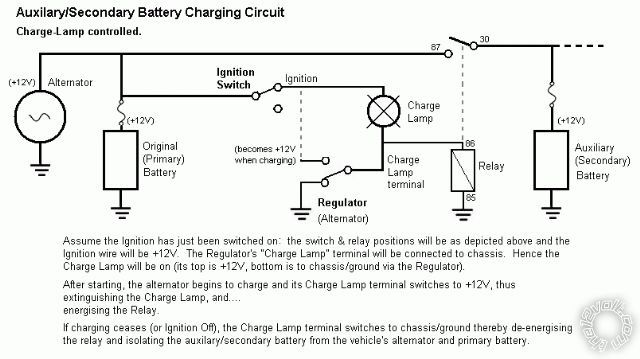Posted: December 16, 2009 at 9:21 PM / IP Logged
Posted: December 16, 2009 at 11:48 PM / IP Logged
Posted: December 17, 2009 at 10:30 PM / IP Logged
Sorry, you can NOT post a reply.
This topic is closed.
 Printable version
Printable version


| You cannot post new topics in this forum You cannot reply to topics in this forum You cannot delete your posts in this forum You cannot edit your posts in this forum You cannot create polls in this forum You cannot vote in polls in this forum |

| Search the12volt.com |
Follow the12volt.com 
Saturday, November 8, 2025 • Copyright © 1999-2025 the12volt.com, All Rights Reserved • Privacy Policy & Use of Cookies


Saturday, November 8, 2025 • Copyright © 1999-2025 the12volt.com, All Rights Reserved • Privacy Policy & Use of Cookies
Disclaimer:
*All information on this site ( the12volt.com ) is provided "as is" without any warranty of any kind, either expressed or implied, including but not limited to fitness for a particular use. Any user assumes the entire risk as to the accuracy and use of this information. Please
verify all wire colors and diagrams before applying any information.








 (from another recent on-site OldFart reply)
The aux battery would be your yellow-top in the trunk. (Enclosed batteries MUST be sealed else vented to the outside.)
It is only connected to the alternator (and engine-bay battery) when the alternator is charging.
Otherwise it is independent, hence NOT draining your engine-bay battery.
The "charge lamp terminal" (aka circuit) could be any "over voltage" sensing circuit.
The aux relay as shown will probably have to drive another relay that is rated to carry at least your alternator current (instead of itself being that "heavy" relay).
This assumes limited current sourcing capability from the voltage sensing or charge-lamp circuit.
The circuit shown has been used on 1980s - 1990s Bosch & Hitachi 2-wire alternators (70-120A) which drive both the standard charge lamp (250mA) and the added 68-Ohm relay solenoid (~200mA) of the 60A Aux-relay. (I suspect similar alternators could sink/source up to 500mA, but that might be risky.)
Anyhow, see what you think and we can develop the idea.
With the AGM next to the Amps, you can sell your cap to fund a dash mounted voltmeter and maybe your next battery, or more cabling etc. Maybe even magnetic breakers that can also double as the heavy 200+ Amp relays (aka contactors).
Ah yes - the ultimate zero-drop high current protection and control system. Fuses? Thermal breakers? How primitive!
(from another recent on-site OldFart reply)
The aux battery would be your yellow-top in the trunk. (Enclosed batteries MUST be sealed else vented to the outside.)
It is only connected to the alternator (and engine-bay battery) when the alternator is charging.
Otherwise it is independent, hence NOT draining your engine-bay battery.
The "charge lamp terminal" (aka circuit) could be any "over voltage" sensing circuit.
The aux relay as shown will probably have to drive another relay that is rated to carry at least your alternator current (instead of itself being that "heavy" relay).
This assumes limited current sourcing capability from the voltage sensing or charge-lamp circuit.
The circuit shown has been used on 1980s - 1990s Bosch & Hitachi 2-wire alternators (70-120A) which drive both the standard charge lamp (250mA) and the added 68-Ohm relay solenoid (~200mA) of the 60A Aux-relay. (I suspect similar alternators could sink/source up to 500mA, but that might be risky.)
Anyhow, see what you think and we can develop the idea.
With the AGM next to the Amps, you can sell your cap to fund a dash mounted voltmeter and maybe your next battery, or more cabling etc. Maybe even magnetic breakers that can also double as the heavy 200+ Amp relays (aka contactors).
Ah yes - the ultimate zero-drop high current protection and control system. Fuses? Thermal breakers? How primitive!